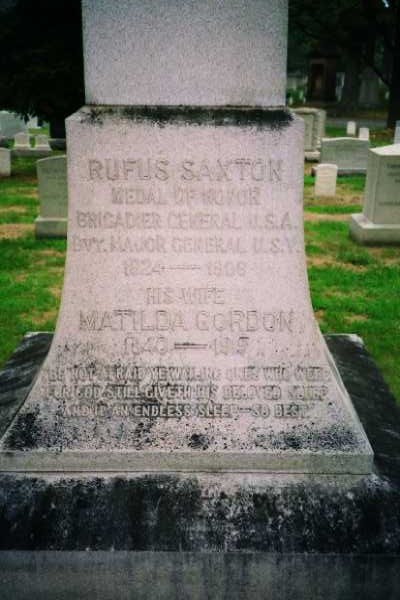Born October 19, 1824 at Greenfield, Massachusetts, Rufus Saxton attended nearby Deerfield Academy and worked on the family farm until, at age 20, he received appointment to West Point from which he graduated in 1849.
He was appointed Second Lieutenant, Artillery, and he served in that Branch against the Seminole Indians in Florida, on the Northern Pacific Railroad, in garrison on several posts, on the Coastal Survey in the East, as an Instructor of Artillery Tactics at West Point and on other Eastern duty. During this period, he patented a self-registering thermostat for deep-sea soundings.
When the Civil War broke out in 1861, he was in command of an artillery detachment at the St. Louis Arsenal, but after assisting General Nathaniel Lyon in dispersing the disloyal Missouri State Guard at Camp Jackson, he became Lyon’s Chief Quartermaster. He then joined General George B. McClellan’s staff in West Virginia and later accompanied the Port Royal Expedition as Quartermaster. He was appointed Brigadier General of U.S. Volunteers as of April 15, 1862 and commanded the defenses of Harpers Ferry in May and June. During the balance of the war he commanded at various points in the South under a multiplicity of formal titles. However, his principal occupation was the enlistment and organization of Negroes, principally ex-slaves, into the Federal Army. At the end of the war, he passed naturally into the newly created Freedman’s Bureau, acting as its Assistant Commissioner for the States of South Carolina, Georgia and Florida until January 1866, when he was mustered out of the volunteer service. He was awarded the Medal of Honor on April 25, 1893 for service as a Brigadier General, United States Volunteers, at Harpers Ferry, Virginia, where he displayed “Distinguished gallantry an good conduct in the defense.”
He was breveted Major General of Volunteers and Brigadier General in the Regular Army, but returned to his pre-war grade of Major to the Quartermaster Department, where he served faithfully and competently in various districts and departments across the country for 22 years. He became a Lieutenant Colonel in 1872 and Colonel and Assistant Quartermaster General in 1882. During his last five years of service, he commanded the Quartermaster Depot, Jeffersonville, Kentucky. After retiring on October 19, 1888, he made his home in Washington, D.C. where he died on February 23, 1908. He is buried in Section 1 of Arlington National Cemetery under a private memorial which reads:
For God still giveth his beloved sleep.
And in an endless sleep – so best.”
His wife, Matilda Gordon Saxton (1840-1915), is buried with him.
Samuel Willard Saxton of Massachusetts
Captain and Assistant Aide de Camp, 30 Apr 1862
Brevet Major of U.S. Volunteers, 12 January 1865
Honorably mustered out of the volunteer service 20 July 1866
His brother, S. Willard Saxton, Brevet Major of United States Volunteers (1829-1883), (Samuel Willard Saxton of Massachusetts Captain and Assistant Aide de Camp, 30 Apr 1862; Brevet Major of U.S. Volunteers, 12 January 1865; Honorably mustered out of the volunteer service 20 July 1866) is buried next to him, as is Willard’s wife, Mary Grant Saxton (1836-1930.)
SAXTON, RUFUS
Rank and organization: Brigadier General, U.S. Volunteers. P/ace and date: At Harpers Ferry, West Virginia, 26 to 30 May 1862. Entered service at: Deerfield, Massachusetts. Birth: Greenfield, Massachusetts. Date of issue: 25 April 1893.
Citation
Distinguished gallantry and good conduct in the defense.
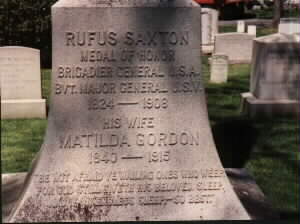
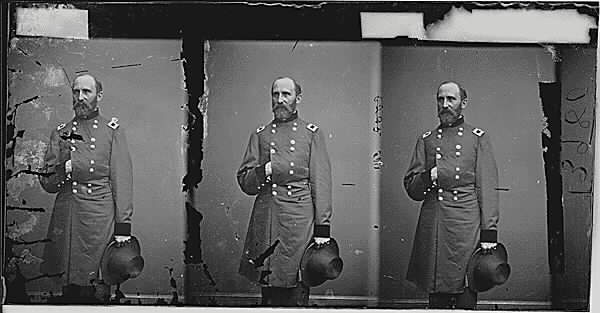
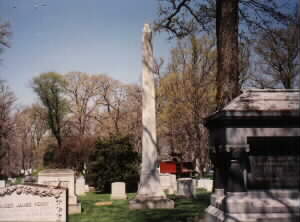
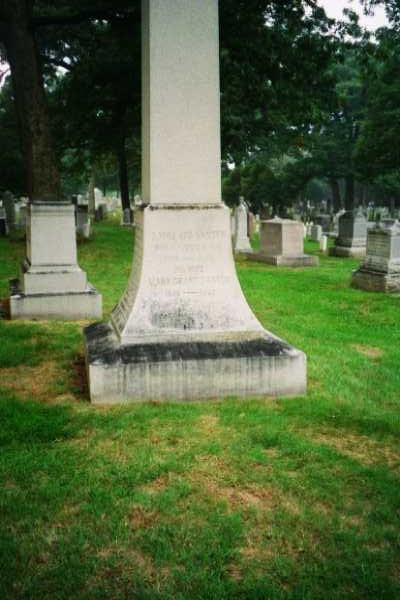
Michael Robert Patterson was born in Arlington and is the son of a former officer of the US Army. So it was no wonder that sooner or later his interests drew him to American history and especially to American military history. Many of his articles can be found on renowned portals like the New York Times, Washingtonpost or Wikipedia.
Reviewed by: Michael Howard

